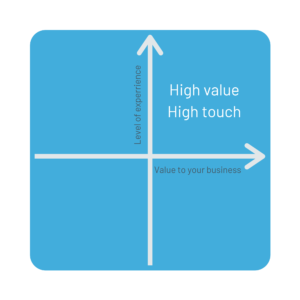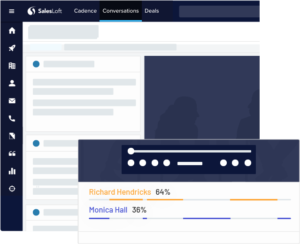Engaging customers is imperative. Explore examples and learn best practices for how to optimize the #fullcycle of your customer experience by:
- Auditing customer experiences
- Aligning your teams
- Leveraging your tech stack
This blog is the third in a three-part series. Here we’ll focus on engaging customers, but visit our Thrive 2020 content hub for two previous blogs about Generating Pipeline and Managing Deals.
Something’s changing. But, what?
Since March I have received over 300 emails to my personal inbox with the term ‘COVID-19.’ Most of these coming from companies that provide me with some type of product or service: banks, grocery delivery, pet grooming. One thing notably lacking in these 300 emails is a resetting of my expectations from these businesses.
“What does this mean for me as your customer?”
At every stage of your customer’s interaction with your business, it is important to look internally and audit your customer experience. This is how you’ll know how your customers are being impacted and put yourself in a position to tell them what to expect.
Right now, most businesses are experiencing some level of unprecedented disruption, be that good or bad. If your business is not able to deliver the same level of services or support to your customers as you had done previously, then acknowledge that. Strengthen your relationship by being human. Be transparent about the challenges your business is facing, and demonstrate empathy for how that impacts your customers.
What follows are tips for engaging customers by aligning your business – people, processes, and tools – to the various stages of the customer experience.
The Warm and Fuzzies
Example:
Anders Assured provides business insurance to a loyal client base of corporate real estate companies in the Northeast. Many of their clients are managing vast fluctuations in their business that require major changes to their insurance policies. This is a crowded industry, and these customers are constantly being prospected by Anders Assured’s competitors.
The company’s customer support team has been experiencing long wait times of up to 45 minutes due to the impacts of physical distancing. Large customers who spend $200k+ in annual insurance contracts are becoming frustrated. The company has stopped monitoring their support email inbox and has turned off the chat functionality on their support website. Customers are feeling like they’re receiving the cold shoulder, and are questioning their loyalty to Anders.
Audit your prospective customer interaction points.
Challenge:
Every customer is important. However, there are those customers that would negatively impact your business should they choose to leave.
Solution:
Segment your customers into groups based on the ways your business values them. Example criteria for segmentation: size, products and services they purchase, contribution to revenue, important logo. ‘Valuable’ may not necessarily translate to how much they spend. Maybe they are a large brand that you need to keep or are a member of your advisory board. 
Not every customer has the same needs or expectations. Focus on understanding what customers within these groups expect from your business- white-glove service or a quarterly email update. Design your customer support experience around these expectations.
“Create personas and journey maps for the highest-value segments…They provide an out-of-the-box hypothesis of a buyer journey that you can refine through further research and testing.” Lori Wizdo, Forrester Research, Beyond Marketing and Sales Alignment: Calibrate to the Customer for Optimal Buyer Experience, May 2019.
Align your teams.
Challenge:
When resources are constrained it becomes difficult to know where to focus your team’s time, especially when you’re pressured to make reactive decisions. How do you focus on engaging customers?
Solution:
Once your customers are grouped, refine how your various teams interact with them based on the expectations of those groups. If your organization has a dedicated customer success organization, make sure that customer success managers are aligned with customer strategy.
For your most valuable customers, create a dedicated success team with their own inbox and phone line. For others, create a series of outbound interactions to proactively notify them of your call wait times and advise them on the best times to call. You may even need to temporarily reassign your inbound and outbound prospecting teams to increase support capacity by answering standard questions.
Leverage your tech stack.
Challenge:
If you’re in a state of reaction, you may not have the time or bandwidth to re-architect your customer experiences.
Solution:
Start small and empower your teams to act quickly. Use Conversation Intelligence to efficiently surface why your customers are calling in, and build talk tracks for your support representatives to be able to address common concerns and questions. Proactively answer these questions in an outbound Cadence to reduce incoming calls.
Give your support team cadences to proactively identify at-risk customers, and automate how they communicate with them via phone, email, or text. Track customer response and sentiment to stay ahead of at-risk customers or potentially negative reviews.
Want more?
Check out our Thrive Content Hub at sal.es/thrive2020 for Pro Tips on selling using Salesloft in this strange environment. This is where we will post and share more helpful content over the coming week.
#saleslove


